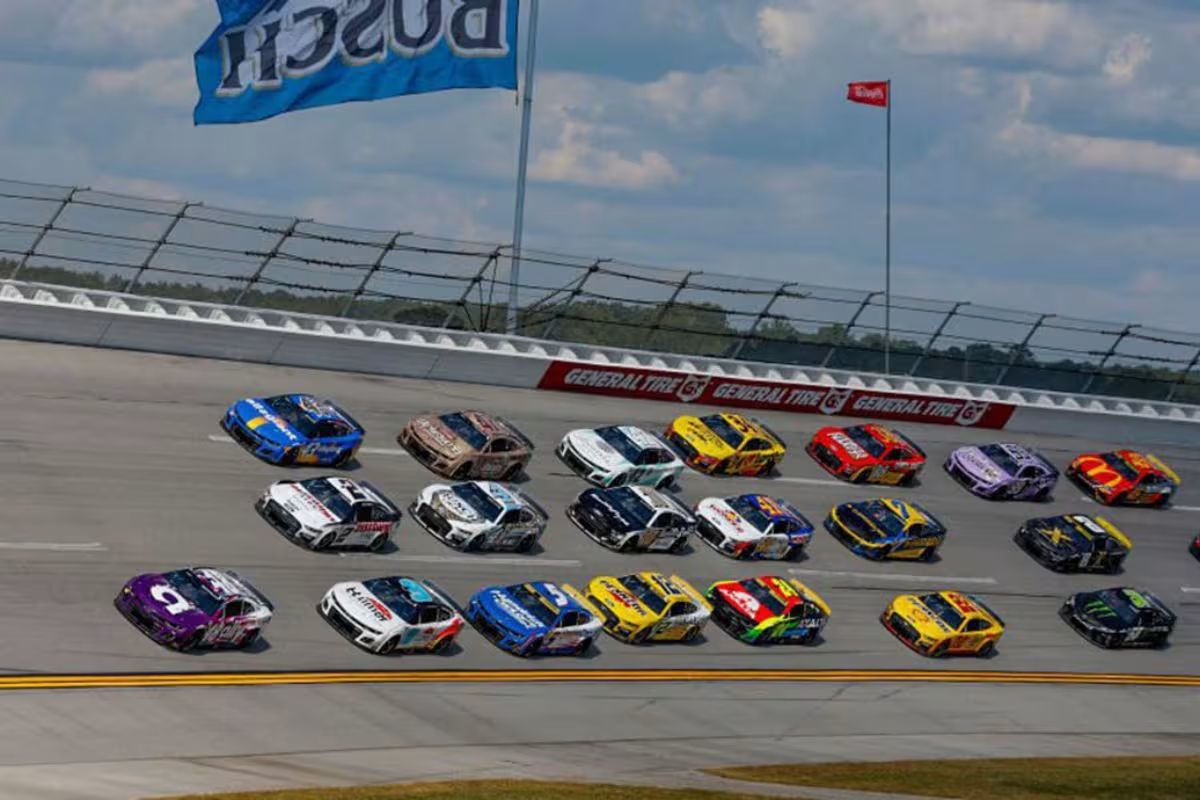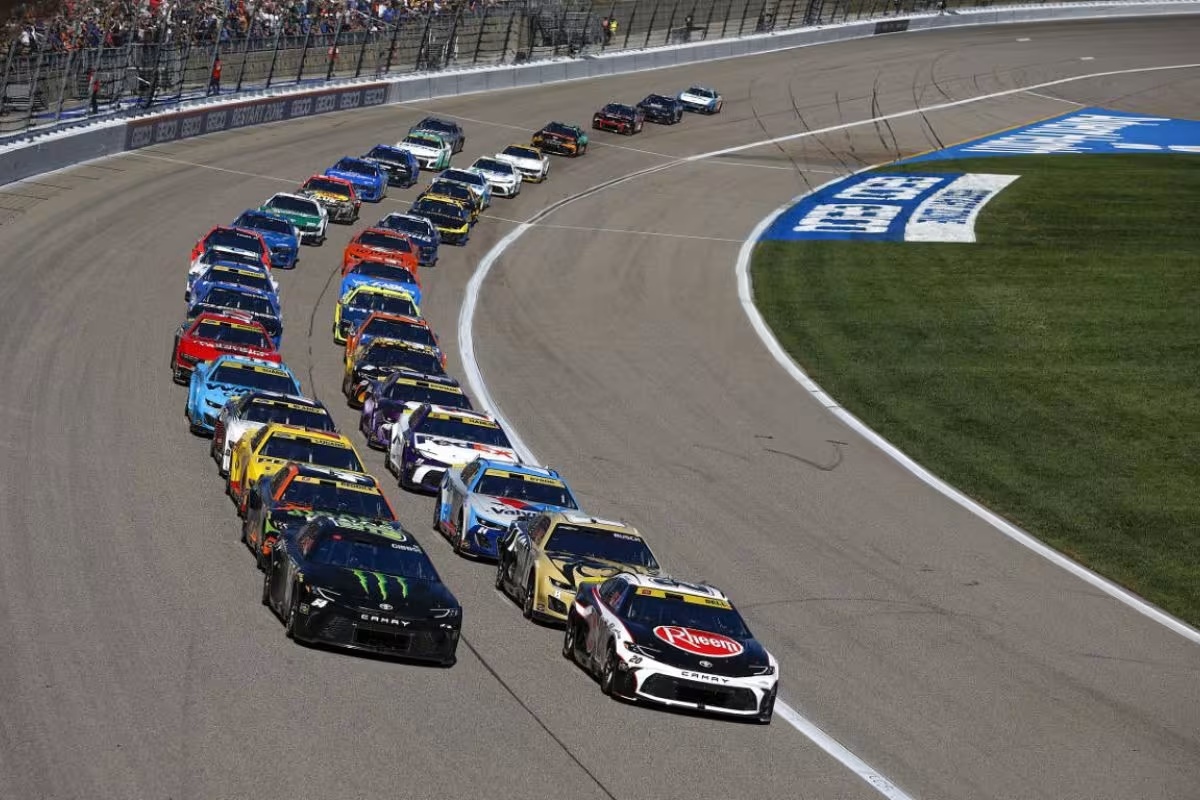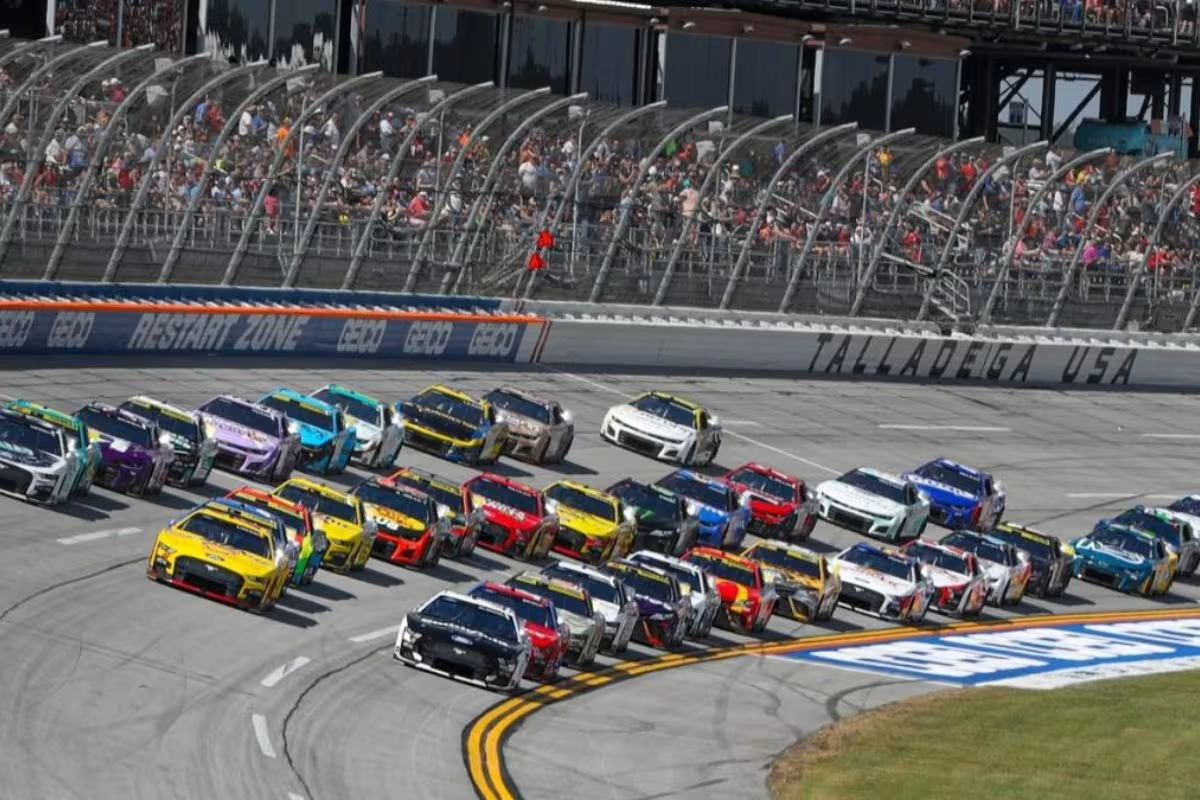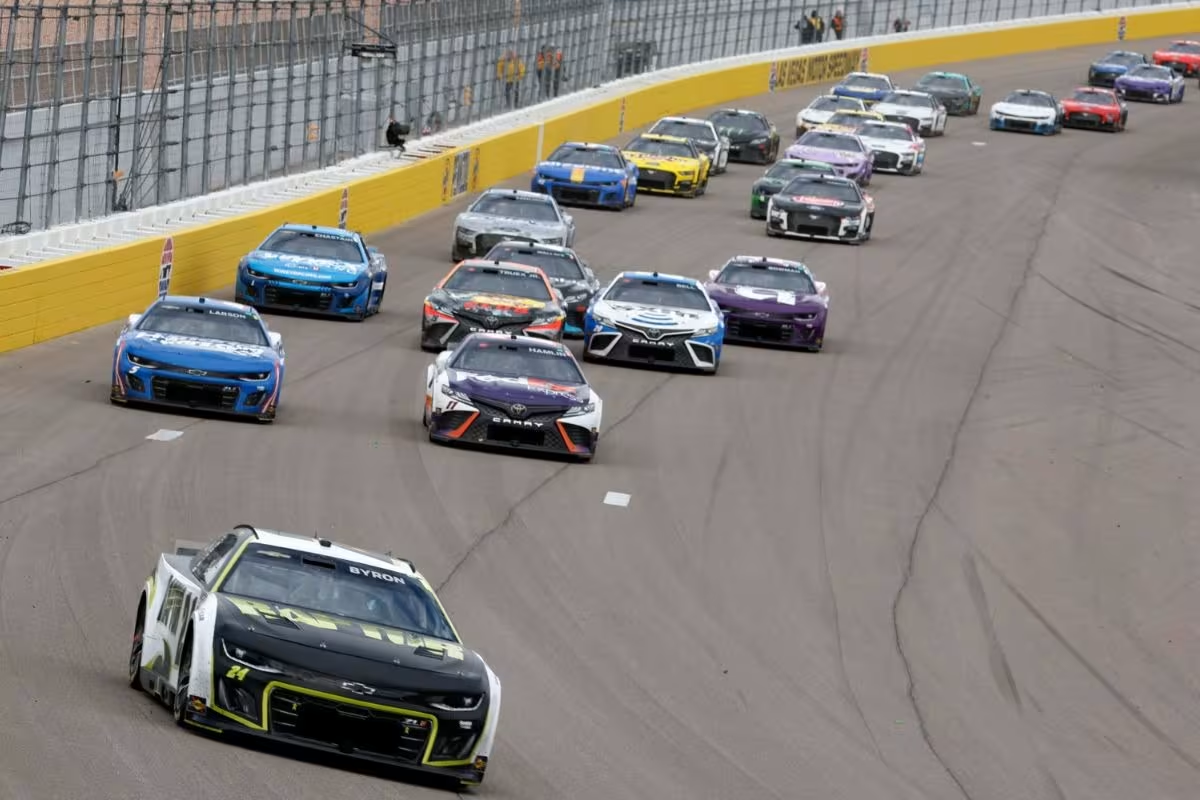NASCAR’s Most Frustrating Failure: Car colors in NASCAR used to be a source of pride for fans, but things are changing fast! With sponsors constantly coming and going, how can you tell who’s driving what? Drivers like Denny Hamlin are facing tough questions about their team’s identity and money struggles. The confusion surrounding car designs raises important questions about the future of NASCAR. Will the sport find a way to bring back the recognizable cars fans love?
Key Highlights
- Industry veterans, like Rick Mast, lament the loss of consistent paint schemes, causing fan frustration in identifying favorite drivers.
- Frequent livery changes linked to sponsorship shifts dilute team brand identity, leading to decreased fan loyalty and engagement.
- Fans express dissatisfaction over the inability to recognize drivers week-to-week due to fragmented car designs.
- Financial pressures force teams to prioritize sponsorship visibility over cohesive liveries, alienating fans and undermining NASCAR’s heritage.
- The need for recognizable liveries is urgent to restore fan connection and ensure the sport’s long-term viability amid growing competition.
NASCAR and Car Identification
Car identification in NASCAR has evolved considerably over the decades, with the once-stable color schemes of race vehicles giving way to a more dynamic, yet increasingly confusing, landscape. Historically, fans could easily identify their favorite drivers based on distinctive and consistent liveries. This not only encouraged loyalty but also improved the comprehensive spectator experience at the racetrack. With a clear visual identity, fans could engage more deeply with the sport, celebrating victories and commiserating over losses with a sense of familiarity.
However, the recent trend of frequent changes in car liveries, driven largely by shifting sponsorship dynamics, has introduced a level of complexity that undermines this familiarity. As sponsors come and go, so too do the colors and designs that serve as visual markers for drivers. For instance, Denny Hamlin’s No. 11 car, traditionally associated with a white and purple scheme due to FedEx’s sponsorship, may soon reflect a radically different palette as financial realities necessitate new branding.
This volatility poses notable challenges for fans, particularly those who may not have the time or inclination to keep abreast of constant changes. The thrill of watching high-speed action becomes muddled with uncertainty as fans strain to identify their favorite cars within a blur of color.
NASCAR’s Car Color Confusion: Insights from Mast and Marlow
The complexities surrounding NASCAR’s evolving car color schemes have sparked considerable discussion among industry veterans, particularly in view of recent sponsorship changes.
In a recent conversation on Kenny Wallace’s YouTube channel, NASCAR legend Rick Mast highlighted a notable shift in how sponsorship dynamics influence car aesthetics. Mast, who raced in NASCAR from 1988 to 2002, noted that during his career, cars typically maintained a consistent paint scheme, with only the sponsor logos changing from race to race. This allowed fans to develop a strong visual connection to both the teams and their drivers.
Today, however, the landscape has become more fragmented. The situation surrounding the No. 11 team and FedEx’s recent sponsorship reduction exemplifies this trend. Charlie Marlow pointed out that Denny Hamlin’s comments suggested FedEx would continue its sponsorship, albeit in a reduced capacity. This uncertainty leads to a scenario where fans may struggle to quickly identify drivers based on their cars, as the color schemes shift considerably from event to event.
Marlow’s reflections underscore a growing frustration among fans who desire consistency and clarity. The rapid turnover in car designs can obscure driver identities, complicating the viewing experience.
I watched Denny Hamlin’s media availability, and he was asked about it, and it did seem like FedEx was going to stay on in some capacity, at least for 2025, based on Denny Hamlin’s comments.” – Marlow
As NASCAR continues to adapt to the evolving sponsorship landscape, the challenge remains: balancing the financial realities of sponsorship with the need for a cohesive visual identity that fans can readily recognize and support. This delicate equilibrium is essential for maintaining the sport’s integrity and connection with its audience.
Marlow and Mast on the Issue
While maneuvering the complexities of modern NASCAR sponsorships, both Charlie Marlow and Rick Mast have expressed their concerns regarding the frequent changes in car color schemes and their impact on fan engagement.
Marlow articulated a critical observation: “The fact that race in, race out, you can’t really tell who the car is, right, by the paint scheme.” This statement highlights a growing frustration among fans who struggle to identify their favorite teams in a multitude of ever-changing designs.
“I do think that’s something NASCAR needs to figure out from a marketing standpoint. The colors, the color schemes—it really helps if you can have that primary sponsor for most of the races.” – Marlow
Mast echoed Marlow’s sentiments, noting, “I’m trying to follow the car, and I have no idea who the hell I’m looking at.” He emphasized the detrimental effect of this trend on the sport: “There’s no doubt about that.”
“It does take away from what we’ve got or what we’re doing, what we’re trying to do. There’s no doubt about that.”
“The price of what it costs to run these cars for a season… trying to keep one sponsor, it’s hard to do that now because the price is so much more.” – Mast
Although financial pressures compel teams to frequently switch sponsors and, by extension, color schemes, the consequences for fan loyalty and brand recognition are noteworthy.
Fans Reaction
Recognizability in NASCAR livery has emerged as a pressing concern for fans, echoing the frustrations voiced by Marlow and Mast. The iconic black No. 3 car driven by Dale Earnhardt serves as a reminder of the significance that a consistent, identifiable design holds for fans. This yearning for recognizable liveries reflects a deeper desire among die-hard supporters who have followed their favorite drivers for years, only to find themselves disoriented by frequent sponsor-induced changes.
The overwhelming response in the comments section of a recent video highlights this discontent. Fans lament the incessant transformation of their drivers’ cars, likening it to a perplexing game of “Where’s Waldo?” as they struggle to identify their favorites speeding past at 200 mph. One fan’s comment encapsulated the sentiment: “You are absolutely correct. I can’t recognize my driver week to week.” This sentiment resonates with many, illustrating the disconnect between traditional fan loyalty and the modern commercial landscape of NASCAR.
“Agreed, Rick, the cameras move so much, and I dislike the constant scheme changes.” – fans’ reaction
Frequent livery alterations not only obscure driver identity but also dilute the emotional connection that fans forge with their vehicles. The racing community thrives on nostalgia, and the recollection of distinguishable designs promotes a sense of belonging and continuity.
As NASCAR navigates its commercial partnerships, the challenge remains to balance sponsor visibility with the need for recognizable liveries that honor the sport’s rich heritage and guarantee that fans can easily connect with their heroes on the track.
The Broader Issue of Money
As financial pressures mount within the NASCAR ecosystem, the consequences extend far beyond livery changes, revealing a troubling trend that undermines the sport’s identity. The increasing reliance on diverse and often obscure sponsorships is not merely an aesthetic concern; it is indicative of a deeper systemic issue.
Teams are forced to continually shuffle sponsors to manage the exorbitant costs associated with participation, resulting in a disjointed visual experience for fans. This shift raises critical questions about the viability of sponsorship in NASCAR.
“This is why NASCAR needs to give the teams more money so corporations can afford to be in the sport. Good for Denny and FRM standing up to NASCAR.”
“It’s not just a different scheme every week; it’s random companies. Pharmaceutical stuff, or things no one has heard of.”
“There is zero ROI for a major corporation to sponsor a racecar now. That’s a major issue.” – fans reaction
The following points outline the broader implications of this financial predicament:
- Erosion of Brand Loyalty: Frequent changes in sponsorship dilute brand recognition and consumer attachment.
- Inconsistent Messaging: Random sponsors result in a fragmented narrative that fails to resonate with audiences.
- Limited ROI for Sponsors: Corporations find diminishing returns on investments, leading to reduced interest in long-term partnerships.
- Impact on Team Stability: Financial instability among teams threatens competitive integrity and performance consistency.
- Dilution of NASCAR’s Identity: The sport’s character risks being overshadowed by a multitude of transient brands that lack historical ties.
The current landscape suggests that NASCAR leadership must reevaluate financial structures and sponsorship models. Without considerable adjustments to encourage sustainable partnerships, the sport risks alienating both fans and potential investors, ultimately compromising its long-term viability.
News in Brief: NASCAR’s Most Frustrating Failure
The ongoing confusion surrounding car identification in NASCAR highlights a notable disconnect between fan expectations and organizational execution. Insights from industry veterans emphasize the necessity for distinct and recognizable liveries to improve viewer engagement. Additionally, the underlying financial implications suggest that prioritizing visual clarity could strengthen attendance and viewership. Addressing these issues may not only appease frustrated fans but also contribute to the comprehensive growth and sustainability of the sport.
ALSO READ: NASCAR’s 32 Billion Dollars Shakeup: An Unexpected Exit Leaves Talladega in the Dust!




